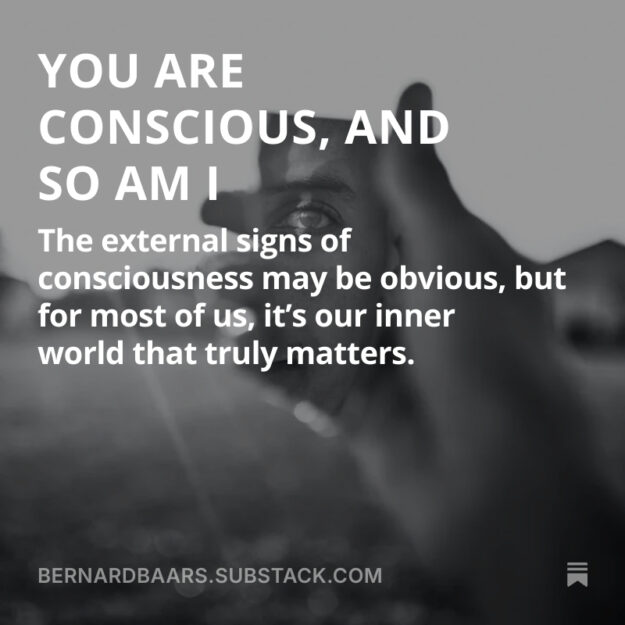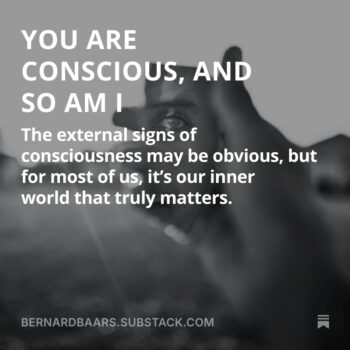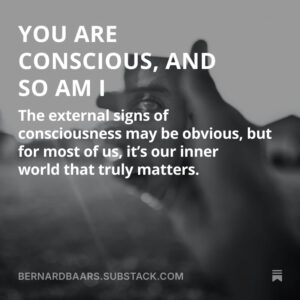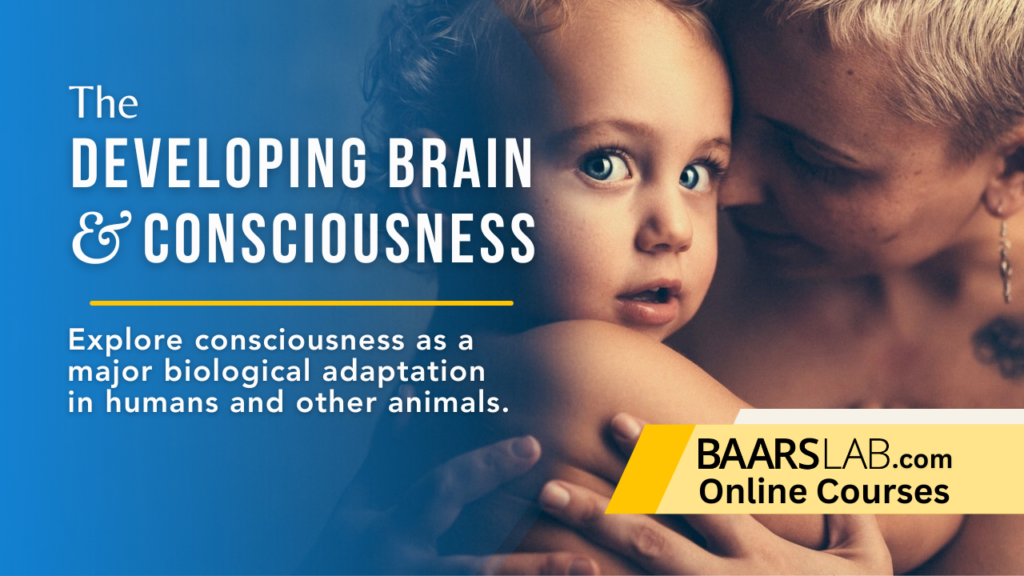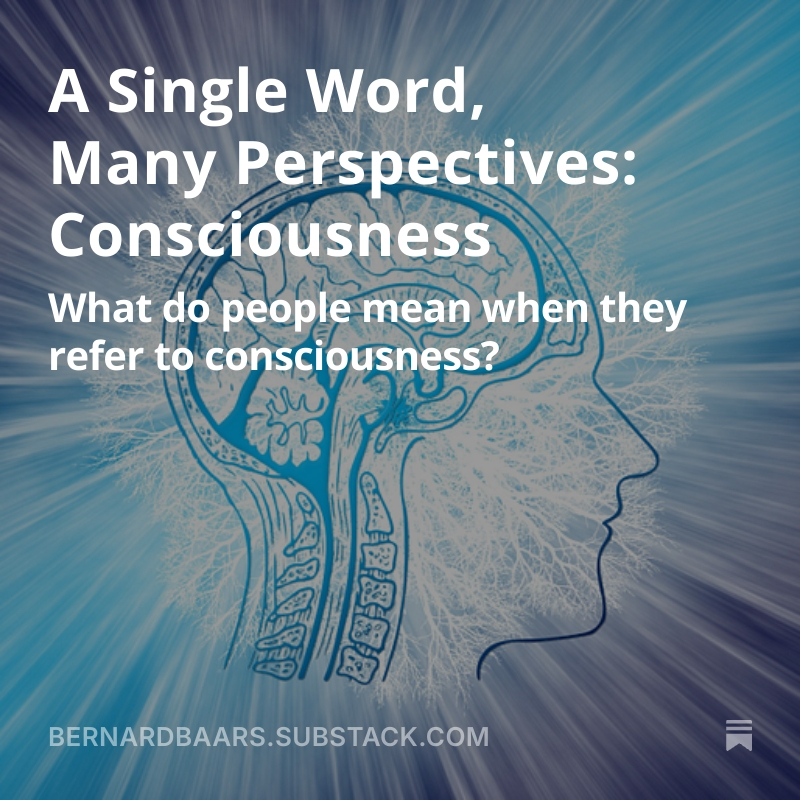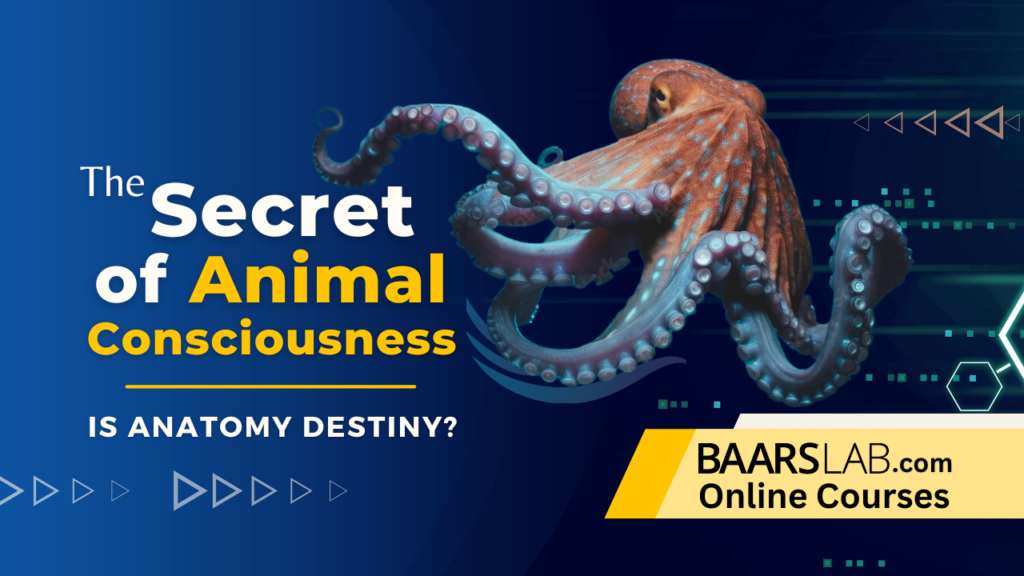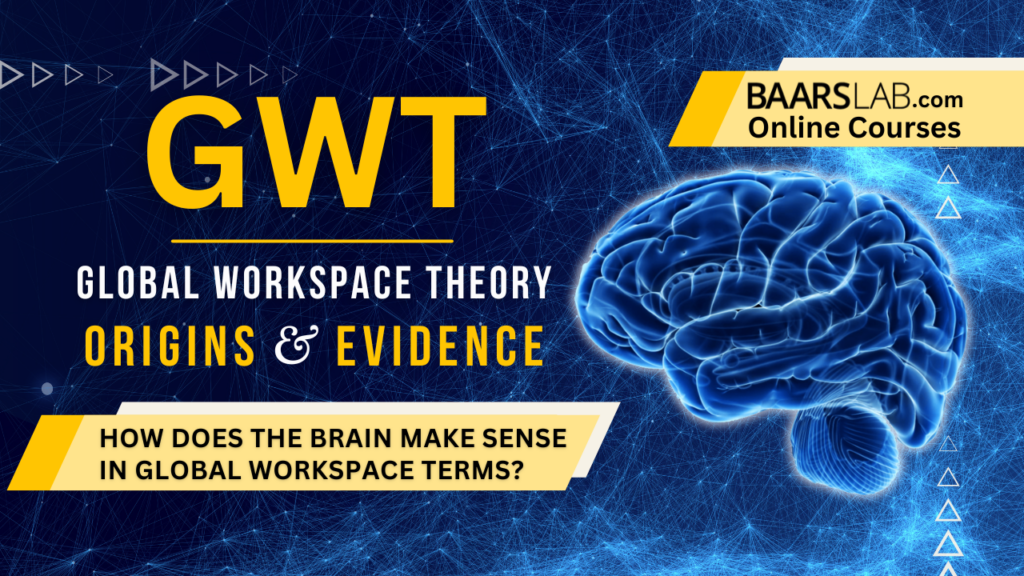YOU ARE CONSCIOUS, AND SO AM I
The external signs of consciousness may be obvious, but for most of us, it’s our inner world that truly matters. This much we can tell pretty easily, since when we are not conscious our bodies wilt, our eyes roll up into their orbits, our brain waves become large, slow, and regular, and we cannot read […]
The external signs of consciousness may be obvious, but for most of us, it’s our inner world that truly matters.
This much we can tell pretty easily, since when we are not conscious our bodies wilt, our eyes roll up into their orbits, our brain waves become large, slow, and regular, and we cannot read a sentence like this one.
While the outer signs of consciousness are pretty clear, it is our inner life that counts for most of us.
The contents of consciousness include the immediate perceptual world; inner speech and visual imagery; the fleeting present and its fading traces in immediate memory; bodily feelings like pleasure, pain, and excitement; surges of feeling; autobiographical events when they are remembered; clear and immediate intentions, expectations and actions; explicit beliefs about oneself and the world; and concepts that are abstract but focal. In spite of decades of behavioristic avoidance, few would quarrel with this list today.
At this instant you and I are conscious of some aspects of the act of reading — the shape of these letters against the white texture of this page, and the inner sound of these words. But we are probably not aware of the touch of your chair, of a certain background taste, the subtle balancing of our body against gravity, a flow of conversation in the background, or the delicately guided eye fixations needed to see this phrase; nor are we now aware of the fleeting present of only a few seconds ago, of our affection for a friend, and some of our top life goals.
These unconscious elements are as important as the conscious ones, because they give us natural comparison conditions.
For example: While you are… KEEP READING THE FULL ARTICLE



